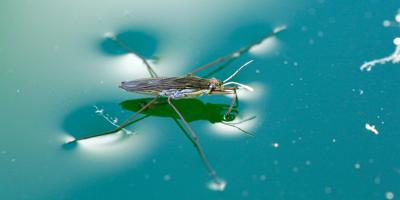Chestnuts, Candy Canes and Cockroaches

Many of today’s Christmas traditions are a lot more recent than you might think. Not only did the United States not formally recognize Christmas as a holiday until 1870, it was also around that time that a Christmas mainstay -- Santa Claus -- arrived on the yuletide scene. There’s an even newer Christmas tradition gaining traction, although most people would agree they could do without this particular custom: cockroaches.
Christmas season is the most common time of year for roaches to be introduced into people’s homes. Why might that be, you ask? Simply because they’re stowaways -- not in a “ship,” per se, but in plenty of “shipments.”
Since online retailers overtook in-person shopping for gifts in the early 2000s, thanks in no small part to everyone’s favorite (and free) two-day delivery option, Americans now receive more packages during the winter holidays than at any other time of the year. German cockroaches (the most common type and the kind you’ll find everywhere in New England) particularly love cardboard.
A Craving for Cardboard
Cardboard not only gives cockroaches shelter -- a place to hide and reproduce -- it’s also a food source. Cockroaches eat both the fibers of the cardboard itself as well as the glue holding boxes together. Cardboard also serves as a mass-transit system, spreading cockroach populations around the globe, from the “Everything Store’s” warehouse to your home.
Chances are, if you discover cockroaches in your home, that pile of boxes in the kitchen or garage may be the Prime suspect for how they got there or what attracted them. Basically, the more packages that get shipped to your home (and the longer you hold onto them before sending them out with the recycling), the more likely your home is to get cockroaches.
This year in particular will likely see a huge uptick in roach populations, as record-breaking numbers of online shoppers are set to spend billions at Amazon and other retailers. Thankfully, however, eliminating the risk of introducing cockroaches to your home is a pretty simple process.
Basically, you’ll want to open your packages, break down the boxes and immediately dispose of the cardboard in an outdoor trash receptacle, all before you bring the merchandise indoors. Fight the urge to store or reuse the cardboard, thinking that a simple “inspection” is all it needs to be certified safe.
Even if boxes appear free of pests, remember it’s not just live bugs that could be tucked in there. Cockroach egg sacs, called ootheca, are extremely sticky and often deposited in the crevices and creases of packaging, out of sight, where they’ll remain dormant until they hatch. A single German cockroach ootheca can hold as many as 40 eggs -- that’s an easy start to an infestation if it happens to hatch in your home.
And you want to avoid an infestation at all costs. German cockroaches are, in fact, dangerous to have in your home due to the fact that they carry diseases like dysentery, cholera and typhoid fever. The threat is more severe for anyone who is allergic to them as exposure to cockroaches can trigger asthma attacks. In children, especially, the frequency and severity of these allergy-induced asthma attacks often requires a trip to the hospital for treatment.
German cockroaches are never anything you want to DIY treat -- they require trained pest professionals to effectively eradicate them. It’s also an issue you’ll want to take care of as quickly as possible, before their populations get out of control.
Our representatives are standing by to answer your questions. Give us a call today to learn more about how we can help protect your home against cockroaches this holiday season.



